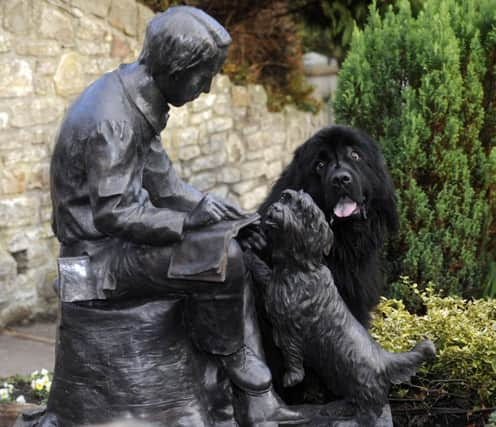Homecoming for our greatest travel writer


As Homecoming Scotland 2014 draws to a close, Edinburgh this week celebrated one of its own most famous emigrés, Robert Louis Stevenson (1850-1894). The focus of RLS Day yesterday was Stevenson’s travel writing, a fitting tribute to an author primarily known for Jekyll and Hyde and Treasure Island.
For in truth, Stevenson was also a celebrated travel writer who crossed the globe in pursuit of love and better health, but who never forgot the city of his birth. Stevenson’s poem that serves as the preface to his posthumously published novel, Weir of Hermiston, speaks affectionately and nostalgically of his “precipitous city”: he had been working on the novel on the very day he had a fatal brain haemorrhage. It is wholly fitting that at the end of his life Stevenson’s imagination should turn again to Edinburgh, the city he loved so much, but in which he could not live.
Advertisement
Hide AdAdvertisement
Hide AdOne of Stevenson’s first publications, in 1878, was a short book, Edinburgh: Picturesque Notes, where he proudly described the New Town as “what Paris ought to be”. The Calton Hill monument is “an imposing object” that gave Edinburgh, “even from the sea, that false air of a Modern Athens”; and Edinburgh Castle is “a Bass Rock upon dry land, rooted in a garden, shaken by passing trains, carrying a crown of battlements and turrets, and describing its war-like shadow over the liveliest and brightest thoroughfare of the new town”.
For Stevenson, Edinburgh thrives as a modern European city: “This profusion of eccentricities, this dream in masonry and living rock, is not a drop-scene in a theatre, but a city in the world of every-day reality, connected by railway and telegraph-wire with all the capitals of Europe.’
Stevenson was alive to the city’s caprices and contrasts. If the New Town rivalled Paris, the Old Town was “the liver-wing of Edinburgh” … “And what a picturesque world remains untouched! You go under dark arches, and down dark stairs and alleys. The way is so narrow that you can lay a hand on either wall; so steep that, in greasy winter weather, the pavement is almost as treacherous as ice.”
It was the city’s inclement weather that drove the ailing Stevenson to warmer parts. Of the Edinburgh winter he wrote: “For some constitutions there is something almost physically disgusting in the bleak ugliness of easterly weather.” He says that the “weather is raw and boisterous in winter, shifty and ungenial in summer, and a downright meteorological purgatory in spring”, concluding that “for those who like clement climes, ‘there could scarcely be found a more unhomely and harassing place of residence”.
Fleeing Edinburgh’s biting winds and suffocating haars, Stevenson travelled west to America, finally settling in Samoa. There he built an imposing villa, Vailima, where he installed his wife Fanny, his mother and the rest of his extended family. Much of the furniture from the family home at 17 Heriot Row was shipped over, and it was at Vailima that Stevenson would write some of his best mature fictions, The Master of Ballantrae and The Ebb-Tide among them.
Yet, despite his wanderlust, Stevenson’s thoughts always turned homewards. What he chose to record in Picturesque Notes reveals to us a complex weave of affection, nostalgia, resentment, and alienation that characterises Stevenson’s experience of, and relationship with his place of birth. These emotions were mellowed by time and distance into a moving homage to the land and city of his birth in the Weir of Hermiston poem that begins:
I saw rain falling and the rainbow drawn
On Lammermuir. Hearkening I heard again
In my precipitous city beaten bells
Winnow the keen sea wind. And here afar,
Intent on my own race and place, I wrote.
On 5 June 1893, Stevenson had written from Samoa to S. R. Crockett: “I shall never see Auld Reekie. I shall never set my foot again upon the heather. Here I am until I die, and here I will be buried.”
This melancholy reflection on his destiny was only too prophetic; but this week Edinburgh has celebrated his legacy with book readings, lectures, tea parties, walking tours, and writing events, culminating in a discussion of Stevenson with Nigel Planer, Louise Welsh and Allan Little. 120 years after his death on Samoa, aged 44, Robert Louis Stevenson has come home.
• Linda Dryden is a professor of literature at the School of Arts & Creative Industries, Edinburgh Napier University.